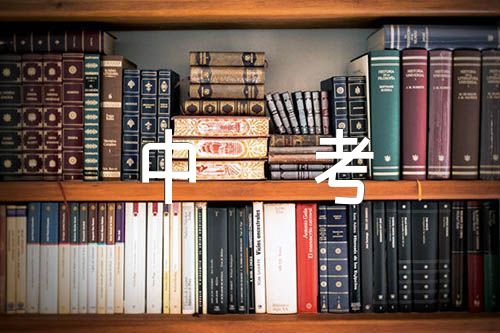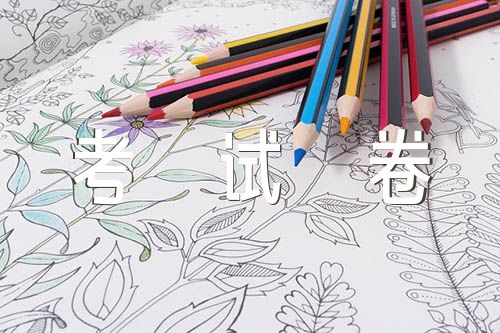南京市中考二模时间 南京市中考英语二模试卷带答案(2)
C
How quickly can you count from one to ten? Do you use ten different words to do it? Can you do it in English, or do you have to use your first languages? Do you count on your fingers? Many people think that numbers and math are the same all over the world. But scientists have discovered that it is not true.
People in different parts of the world use different ways to count on their fingers. In the United States, people begin counting with their first fingers, which they extend or stick out. They then extend the rest of their fingers and finally the thumb (拇指) to count to five. Then they repeat this with the other hand to get to ten. In China, people count by using different finger positions. In this way, a Chinese person can easily count to ten on only one hand.
Besides ways of finger counting, scientists have found that cultures and languages are also different when it comes to numbers. Some languages have only a few words for numbers, and others have no words for numbers. A group of scientists studied aboriginal (土著的)people in Australia. These people don’t have hand movements to stand for numbers. They don’t even have word for numbers. However, they are still able to understand different ideas about numbers.
In a similar study, researchers from the Massachusetts Institute of Technology discovered that people of the Piraha tribe (部落) in northwestern Brazil don’t have words for numbers such as “one” or “three”. They are not able to say “five trees” or “ten trees” but can say “some trees”, “more trees”, or “many trees”. Professor Edward Gibson said that most people believe that everyone knows how to count, “but here is a group that does not count. They could learn, but isn’t not useful in their culture, so they’ve never picked it up.”
Although all humans are able to understand quantities (数量), not all languages have numbers and not all people use counting. Number words in a certain language are a result of people needing numbers in their daily lives. Now we know that people have different ideas about numbers and math, too.
32. The writer begins with the four questions in order to______.
A. make a survey B. interest readers C. tell a story D. solve math problems
33. What do we learn from the difference in finger counting between the U.S. and China?
A. People from China count much faster than people from the U.S.
B. People from China need two hands to count from one to ten.
C. People of different cultures may use different ways of finger counting.
D. People of different cultures use the same way of finger counting.
34. Which of following is true about aboriginal Australians?
A. They have only a few words for numbers.
B. They have hand movements to stand for numbers.
C. They can only count to five on their fingers.
D. They can understand different ideas about numbers.
35. What is the main idea of the passage?
A. People from different cultures have different ideas about numbers and math.
B. Chinese people can count more easily on their fingers than Americans.
C. In some aboriginal culture, people don’t even know how to count.
D. Some languages don’t have number words because people don’t need numbers.
D
Stonehenge, a rock circle, is not only one of Britain’s most famous historical places but also one of its greatest mysteries. Every year it receives more than 750,000 visitors. People like to go to this place especially in June as they want to see the sun rising on the longest day of the year.
For many years, historians(历史学家) believed Stonehenge was a temple where ancient leaders tried to communicate with the gods. However, historian Paul Stoker thinks this can’t be true because Stonehenge was built so many centuries ago. “The leaders arrived in England much later,” he points out.
Another popular idea is that Stonehenge might be a kind of calendar. The large stones were put together in a certain way. On midsummer’s morning, the sun shines directly into the center of the stones. Other people believe the stones have a medical purpose. They think the stones can prevent illness and keep people healthy. “As you walk there, you can feel the energy from your feet move up your body,” said one visitor. No one is sure what Stonehenge was used for, but most agree that the position of the stones must be for a special purpose. Some think it might be a burial(埋葬) place or a place to honor ancestors(祖先). Others think it was built to celebrate a victory over an enemy.
Stonehenge was built slowly over a long period of time. Most historians believe it must be almost 5,000 years old. One of the greatest mysteries is how it was built because the stones are so big and heavy. In 2001, a group of English volunteers tried to build another Stonehenge, but they couldn’t. “We don’t really know who built Stonehenge,” says Paul Stoker. “And perhaps we might never know, but we do know they must have been hard-working — and great planners!”
36. Visitors like to go there in to enjoy on the longest day of the year.
A. July; sunrise B. June; sunrise C. June; sunset D. July; sunset
37. When was Stonehenge most likely built?
A. 750,000 years ago. B. Six centuries ago.
C. 5,000 years ago. D. In 2001.
38. What do most people think was Stonehenge built for?
A. Ancient leaders built it a temple to communicate with the gods.
B. It might be a kind of calendar to tell people the summertime.
C. It can prevent illness and make people feel energetic.
D. It must be for a special purpose because of the position of the stones.
39. What aren’t people interested in about Stonehenge?
A. Where it was built. B. Who built it.
C. When it was built. D. Why it was built.
40. What does Paul Stoker mean by “we do know they must have been hard-working — and
great planners”?
A. He has known who built Stonehenge.
B. He thinks Stonehenge is really a great mystery.
C. He believes he will find out who built Stonehenge.
D. He encourages volunteers to build another Stonehenge.
第二卷 (非选择题,共40分)
四、填空(共15小题;每小题1分,满分15分)
A) 根据括号中所给定汉语写出1个单词,使句子意思完整正确,并将答案填写在答题卡标号为41-45的相应位置上。
41. People around the world love ▲ (和平) and hate wars.
42. Are you sure you can complete the task ▲ (独自)?
43. My uncle lives on the ▲ (十二) floor of the building.
44. New rules are made in China to ▲ (减少) traffic accidents.
45. Every year, Shanghai Film Festival attracts many famous ▲ (导演) and actors.
B) 根据句子意思,用括号中所给单词的适当形式填空,并将爱那个答案填写在答题卡
号为46-50的相应位置上。
46. She is ▲ (possible) the smartest student in this school.
47. There isn’t much ▲ (different) in function between the two computers.
48. Hey, guys! Don’t you think you’re old enough to take care of ▲ (you)?
49. The Confucius Temple is one of the most famous attractions that are worth ▲ (visit).
50. The news that Beijing is bidding for 2022 Winter Olympics makes us ▲ (excite).
C)根据短文内容,从下面方框中选择适当的单词或短语填空,使对话内容完整正确,并将
答案填写在答题卡标号为51-55的相应位置上。
Driving cars is an important part of our lives. We may do it every day to get to work, to school or to visit friends.
Driving can be very convenient and fast. (51) ▲ , it can also cause many problems. Waiting in line at a red light, a driver may get impatient and decide just to drive right through it. If another car is coming from the other direction, there might be a terrible accident. Cutting another car off can make its driver angry, (52) ▲ the driver cuts off someone else. Pretty soon everybody is angry and impatient.
Traffic accidents declare (53) ▲ lives every year worldwide. In Taiwan Province, over seven people are killed in accidents every day. The yearly death rate from traffic accidents in Taiwan is twice (54) ▲ that in Japan.
To allow traffic to move smoothly and safely, everybody must (55) ▲ the rules. Before you drive, learn all the traffic laws. That way of driving is safe, convenient and even fun.
五、阅读填空(共20小题;每小题1分,满分20分)
A) 阅读下面短文,根据所读内容,在文章后第56-65小题大空格里填入一个最恰当的单词,并将答案填写在答题卡标号为56-65的相应位置上。注意:每个空格只填1个单词。
Have you ever wondered what goes through your mind when you choose where to sit in a new classroom? Or in a waiting room full of strangers? Or on a bus? Researchers have found out some interesting facts.
Perhaps unsurprisingly, we prefer to sit closer to people like ourselves. Girls sit by girls and boys sit by boys. Adults sit together and young people choose another young person to sit near. But it goes further than this. We even choose to sit near someone who looks like us. People with glasses are more likely to sit near other people with glasses. People with long hair sit closer to other people with long hair.
We seem to believe that people with similar habits or hobbies will share similar attitude and we are more likely to be accepted by people like ourselves or even, we think we may be safer with people who look like us. Sometimes that’s true but it’s a pity if we always stick to the same people, the same group. The danger in always staying in our comfort zone (舒适区) is that we just recycle the same opinions, the same tastes and the same ideas. We lose the chance to learn something new, find out about interesting things, hear funny stories and discover difference.
When we always stick to the same people, how can we ever break down the barriers which prevent us from getting to know people with different ideas? And how can we avoid the ignorance (无知), which too often leads to prejudice (偏见) and even fear? If instead you want to live in a society that opens to changes and new things and different opinions, be the cat among the pigeons.
Move out of your comfort zone. Go and sit next to someone different. And don't just sit there in silence. Say hello. Ask a question. Start a conversation. That’s how we make friends. That’s how we learn about people. That’s how we open our minds to new ideas. That’s how we live an exciting life.
Some interesting (56) ▲ about where to sit
Phenomena We would rather sit beside people like ourselves Girls sit by girls, boys sit by boys, adults sit by (57) ▲ , young people sit near young people.
Some people (58) ▲ to sit near someone like us. It's highly (59) ▲ that people with glasses sit near others with glasses.
People with short hair sit near others with (60) ▲ hair.
Advantages People will share similar attitude and may be accepted by people (61) ▲ look like ourselves.
People can break down the barriers which prevent us from getting to know people with different ideas.
People can avoid the ignorance.
(62) ▲ We recycle the same (63) ▲ , tastes and ideas.
We have no (64) ▲ to learn something new.
Conclusion Don't sit there (65) ▲ , learn more about people.
B) 根据短文内容及首字母提示,填写所缺单词,并将答案填写在答题卡标号为66-75的相应位置上。
Chai Jing, used to be a journalist with China Central Television, presents a self-funded(自费的) documentary about smog in Beijing, Feb 28, 2015.
The (66) d ▲ about smog Under the Dome is inspired by her sick daughter. It (67) m ▲ a comeback for the former journalist with China Central Television after the birth of her child. It brings some sadness to the public, and now we know Chai Jing is not only a careful observer but also a (68) m ▲ full of love.
After ending the ten-year job with the state broadcaster early last year, Chai is out of public attention to focus on taking (69) c ▲ of her daughter, who was discovered a tumor(瘤) and received an (70) o ▲ as a new-born baby.
“I saw smog through my daughter’s eyes,” Chai said while presenting her film. She told how the little girl was kept indoors, touching the window to complain about being (71) u ▲ to play outside.
The public is no stranger to Chai. She pointed at the (72) p ▲ in serious areas, especially the northern province of Shanxi, her coal-rich hometown. Therefore, it helped build her image as an environmental advocate(倡导者).
Chai said she hoped the 103-minute film would serve as an answer to three (73) q ▲ about smog—what is smog, where does it come from and (74) w ▲ should we do with it. It’s also the answer that she’s been preparing for her daughter.
Chai became a household name (75) t ▲ reporting big national news stories such as the SARS outbreak, Wenchuan earthquake and coal mine accidents. Now, she is considered as a great woman in China.
六、书面表达 (满分15分)
提示:假如你叫王平,参加了学校的“有烦恼向谁说?”的调查活动(a survey)。
调查结果:1、大多数向同学、朋友说(理由:年龄相仿,容易交流和理解)
2、一些向老师、家长说(理由:经验丰富、可以得到帮助)
3、少数自己独立解决(理由:不愿与人交流,难以与人相处)
请你根据中文提示用英语给某报社编辑写一封信(信的开头与结尾已经给出),说明情况并提出你自己的观点。
要求:1、根据内容要点适当增加细节,以使行文通顺连贯;
2、词数90左右,不必逐句翻译,可适当发挥。;
3、开头已给出,不计入单词总数。
Dear Editor,
I am a Grade 9 student. Recently we have made a survey ----“To whom do you go when in trouble?” Here are the results.
▲
▲
Yours Sincerely,
Wang Ping
参考答案
一、单项填空
1~5 CBDBC 6~10 CDBDC 11~15 BABCA
二、完形填空
16-25 ACDBD, DCBCB
三、阅读理解
26~30 BDADC 31~35 BBCDA 36—40 BCDAB
四、填空
A) 41. peace 42. alone 43. twelfth 44. reduce 45. directors
B) 46. possibly 47. difference 48. yourselves 49. visiting 50. excited
C) 51. However 52. so that 53. millions of 54. as many as 55. follow
五、阅读填空
A) 56. facts 57. adults 58. choose 59. possible 60. short
61. who/that 62. Disadvantages 63. opinions 64. chance 65. silently
B) 66. documentary 67. marks 68. mother 69. care 70. operation
71. unable 72. pollution 73. questions 74. what 75. through
六、书面表达
One possible version:
Dear Editor,
I am a Grade 9 student .Recently we have made a survey –“To whom do you go when in trouble?” Here are the results.
Most students will go to their classmates or friends when they have trouble because they are almost the same age .They can talk with and understand each other easily .Some will tell their teachers or parents about their problems as they have rich experience and they are helpful . Only a few solve their problems by themselves. They hate to talk with others and can’t get on well with other people, either. They have few friends.
I think we’d better ask our teachers, parents, classmates, and friends for help when we are in trouble.
Yours Sincerely
Wang Ping
评分标准建议:
1. 评分原则:
(1)本题总分15分,按5个档次给分。
(2)评分要求:先读文章,再定档次,最后评分。
(3)短文格式:合理分段(1分)。
(4)短文内容:要涵盖表格中所提示的内容和适当发挥。
(5)书写、词数:书写(1分)。如书写较差,影响信息传递,将分数降低一个档次。
(6)评分时应注意内容表达、词汇和语法结构的使用是否准确、上下文是否连贯及语言表述是否得体。
2. 各档次的给分范围和要求:
第五档(13~15分):能写明全部要点,语言基本无误或有少量拼写错误,行文流畅,表达清楚。
第四档(10~12分):能写明大部份要点,语言有一些错误(句子结构或动词时态错误1~2处),但行文基本流畅,表达基本清楚。
第三档(7~9分):能写明一些要点,语言错误较多(句子结构或动词时态错误3~4处)但意思基本连贯,表达基本清楚。
第二档(4~6分):能写明少数要点,语言错误多,意思不连贯,影响意思表达。
第一档(1~3分):只能写出若干单词,无可读的句子。
南京市中考二模时间 南京市中考英语二模试卷带答案(2)相关文章:
南京市中考二模时间 南京市中考英语二模试卷带答案(2)
上一篇::原来我没懂作文 原来我没懂






